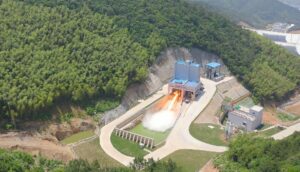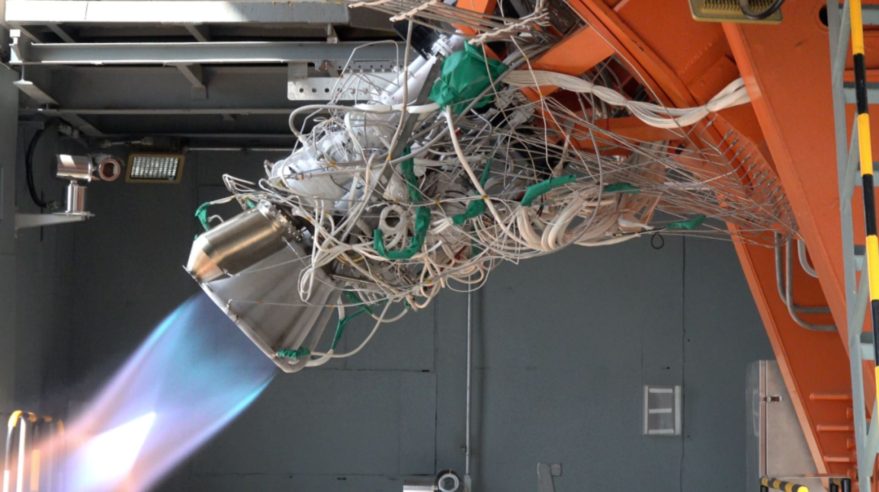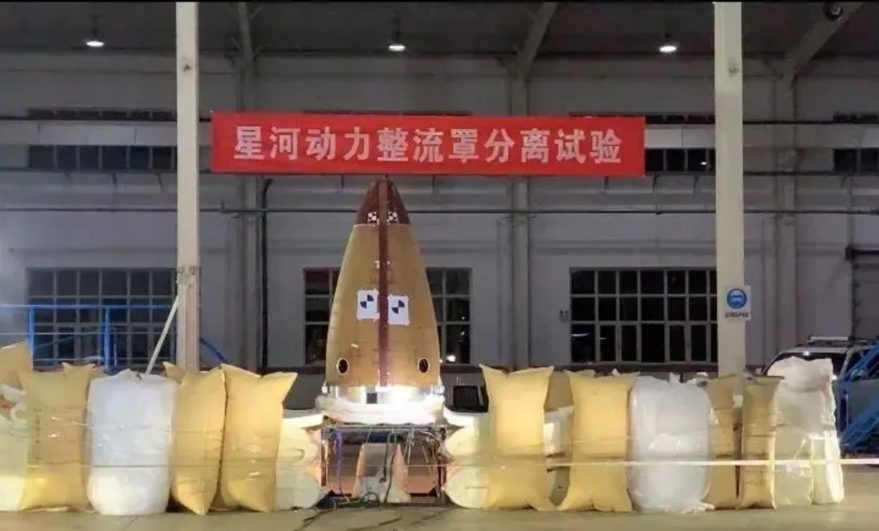Chinese private launch firms advance with methane engines, launch preparations and new funding
By Andrew Jones

HELSINKI — A number of Chinese private launch firms for the burgeoning commercial space sector have reported progress in efforts to develop a range of launch vehicles.
Landspace and iSpace are reporting progress with methane rocket engines, while Galactic Energy is moving closer to launch of its Ceres-1 launcher. Deep Blue Aerospace has meanwhile secured early funding for development of a liquid launch vehicle series.
Landspace completed three gimbaling hot fire tests of the SkyLark (Tianque-12) 80t-thrust-level cryogenic methane and liquid oxygen rocket engine early-mid May. Tianque-11, a smaller, 10-ton liquid oxygen methane engine, passed 2,000 seconds of testing June 5.
The engines will together power the 48.8-meter-tall, two-stage Zhuque-2 launch vehicle. The launcher will be capable of delivering a 4,000-kilogram payload capacity to a 200-kilometer low Earth orbit (LEO). Alternatively ZQ-2 can loft 2,000 kilograms to 500-kilometer Sun-synchronous orbit (SSO).
LandSpace’s lead engineer for propulsion technology states the Tianque-12 test success is the first verification test of the launcher’s engine system and control system compatibility, confirming the flight configuration of the engine for ZQ-2. The launcher now enters the joint compatibility test phase ahead of a first launch late 2020 or early 2021.
Landspace was founded in 2015 and in October 2018 made the first private Chinese launch attempt with its Zhuque-1 solid rocket.
iSpace reusable launcher, VTVL tests
Beijing-based iSpace, which achieved orbit July 2019, also made progress with its own methalox engine in May.
The 15-ton thrust JD-1 engine completed a 200-second hot fire test May 19. The engine passed a secondary start test May 27, paving the way for future vertical takeoff, vertical landing tests. JD-1 engines will power the reusable Hyperbola-2 methlox launcher, capable of lifting 1,900 kilograms to LEO.
The firm aims to conduct 100-kilometer vertical take-off and landing tests of the Hyperbola-2 first stage later this year. The full orbital test flight is planned for the first half of 2021.
Vice president of iSpace Yao Bowen told state media following the SpaceX Demo-2 mission that “SpaceX is further along the track, but we share its vision of eventually sending passengers into space via cost-effective modules.”

Galactic Energy closes on Ceres-1 launch
Galactic Energy, established February 2018 and one of the newer Chinese private launch firms, has made progress toward its first launch. The four-stage Ceres-1 solid rocket will be able to lift 350 kilograms of payload to a 200-kilometer orbit.
The firm this week announced (Chinese) that a successful payload fairing separation test had been performed in May. A hot fire test of the upper stage attitude control engine took place in April, with a full system upper stage cold flow test following in May.
Galactic Energy was targeting a June launch of the Ceres-1 but the COVID-19 pandemic brought delays. Launch from Jiuquan is now expected in the August-September timeframe.
The firm secured $21.5 million in funding in December for the Ceres-1 launch and developing the Pallas-1 kerosene and liquid oxygen launch vehicle. The partially reusable Pallas-1 will be capable of launching four metric tons to LEO or two tons to SSO.

Deep Blue Aerospace seals funding
Beijing Deep Blue Aerospace Technology Co., Ltd., announced (Chinese) Friday it had secured seed funding of more than $14.1 million (100 million yuan). The financing will be used for research and development, verifying vertical landing technology and testing kerosene-liquid oxygen engines.
Founded in 2017, Deep Blue Aerospace is developing the expendable Nebula-1 and recoverable Nebula-2 liquid launchers. The Nebula-1 first stage will be powered by nine Leiting-20 engines, with a single engine on the second stage.
The 2.25-meter-diameter Nebula-1 and 3.35-meter-diameter Nebula-2 are to be capable of lifting 500 kilograms to 500 km SSO and 4,500 kilograms to LEO respectively. No date for test flights was provided.
China opened segments of the space sector to private capital in 2014. More than 141 registered commercial aerospace companies, developing launch vehicles, small satellite platforms, remote sensing and communications satellite constellations, ground stations and various parts of supply chains had been established in China at the end of 2018, according to Chinese publication Future Aerospace.
China’s National Development and Reform Commission added ‘satellite internet’ to a list of “new infrastructures” in an April meeting. Satellite internet, 5G, Internet of Things and artificial intelligence, to be targeted for investment and guidance. The move is perceived as an attempt to boost innovation in the technology sector and stimulate the Chinese economy.
A military-civil fusion national strategy is supporting and facilitating these commercial space activities. The aim is to foster innovation in military and civilian realms but also develop new supply chains and lower costs.
June 5, 2020 at 04:51PM
via SpaceNews.com read more...

Post a Comment